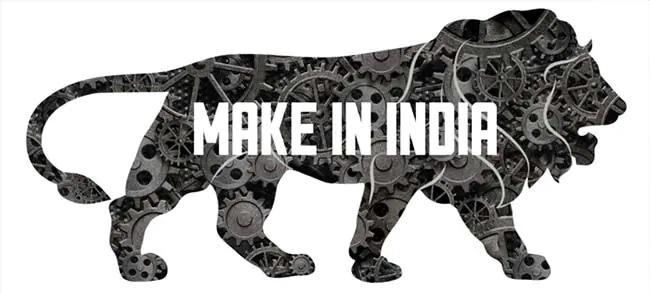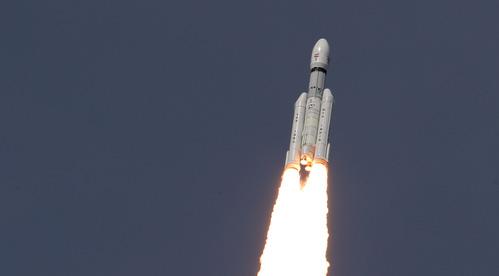
4 minute read
MAKE IN INDIA
As world economies restart their engines in a bid to regain lost ground due to the Covid-19 pandemic, India too shows signs of economic buoyancy and promise. India’s Make in India initiative holds a key to the global economic revival, something that should interest Australian government ministries, corporate sector, entrepreneurs, institutions seeking R&D collaborations and Australia Inc in general, among others. India assumes greater importance as several major world economies including American, Japanese, German, British and South Korean look to move out and diversify their businesses from China. India has jumped to 63rd rank in the World Bank’s Ease of Development 2020 report, and has also been ranked as the 9th largest recipient of Foreign Direct Investment destinations in 2019 by the World Investment Report 2020 of the United Nations Conference on Trade and Development (UNCTAD).
India’s ‘Bahubali’ rocket LVM3 puts Chandrayaan-3 spacecraft in orbit
Advertisement

By Venkatachari Jagannathan
Continued from Page 1 later. A couple of days after the spacecraft enters lunar orbit, the lander will make a soft landing on the moon near its South Pole.
The Chandrayaan-3 spacecraft comprises a propulsion module (weighing 2,148 kg), a lander (1,723.89 kg) and a rover (26 kg), the ISRO said. Incidentally, the Chandrayaan-2 payload also weighed about 3.8 ton with the orbiter weighing 2,379 kg, the Vikram lander 1,444 kg, including the Pragyan rover 27 kg.
During the Chandrayaan-2 mission ISRO had named the lander as Vikram in memory of country's space pioneer Vikram Sarabhai and rover Pragyan means wisdom in Sanskrit. But this time around, ISRO has not officially named the lander and the rover.
According to ISRO, the propulsion module has Spectro-polarimetry of Habitable Planet Earth (SHAPE) payload to study the spectral and Polari metric measurements of Earth from the lunar orbit. The lander payloads are: Chandra’s Surface Thermophysical Experiment (ChaSTE) to measure the thermal conductivity and temperature; Instrument for Lunar Seismic Activity (ILSA) for measuring the seismicity around the landing site; Langmuir Probe (LP) to estimate the plasma density and its variations.
Kia exceeds 1 mn vehicle production at India plant
A passive Laser Retroreflector Array from NASA is accommodated for lunar laser ranging studies.
On the other hand, the rover will carry: Alpha Particle X-ray Spectrometer (APXS) and Laser Induced Breakdown Spectroscope (LIBS) for deriving the elemental composition in the vicinity of the landing site, ISRO said.
According to ISRO, the moon mission is divided into three phases – the earth centric phase (Pre-Launch, Launch and Ascent and Earth-bound Manoeuvre), the Lunar Transfer Phase (Transfer Trajectory), and the Moon Centric Phase (Lunar Orbit Insertion Phase, Moon-bound Manoeuvre Phase, Propulsion Module and Lunar Module Separation, Deboost Phase, Pre-landing Phase, Landing Phase, Normal Phase for Lander and Rover, Moon Centric Normal Orbit Phase -100 km circular orbit- for Propulsion Module).
With the successful launch, the 'Bahubali' rocket has notched up an impeccable record of seven consecutive successful missions. This is the fourth operational flight of LVM3. The LVM3, with a capacity to carry four ton, is a three stage/engine rocket with two strap-on motors powered by solid fuel. The second stage is a core liquid fuel booster and the third is the cryogenic engine. The lander is expected to reach the moon's vicinity on August 17. After parting of ways with the spacecraft, the lander is expected to soft land on August 23 at about 5.47 p.m. The lander will descend to the moon from a height of about 100 km from the moon’s surface. The soft landing is a tricky issue as it involves a series of complex manoeuvres consisting of rough and fine braking. Imaging of the landing site region prior to landing will be done for finding safe and hazardfree zones.
Subsequent to the soft landing, the six-wheeled rover will roll out and carry out experiments on the lunar surface for a period of one lunar day which is equal to 14 Earth days. The life of the payloads carried by the propulsion module post ejection of the lander is between three and six months. On the other hand, the mission life of the lander and the rover is 1 Lunar day or 14 earth days, ISRO said. The success of Chandrayaan-3 mission will make India the fourth country in the world to land and ride on the Moon surface after the US, Russia, and China.
India launched its first Moon mission Chandrayaan-1 in October 2008 using its light rocket Polar Satellite Launch Vehicle (PSLV) and the second mission on July 22, 2019 with the Geosynchronous Satellite Launch Vehicle-Mk III now renamed as LVM3.
The Friday moon mission is a follow up of the failed Chandrayaan-2 mission in 2019 when the lander named Vikram crashed on to the moon surface.
(Venkatachari Jagannathan can be reached at v.jagannathan@ ians.in)
New Delhi, July 14 (IANS) Kia, South Korea's second-biggest carmaker by sales, said on Friday its accumulated vehicle production in India has exceeded 1 million units, helped by increased sales of customized models.
Kia began production at the 350,000-unit-a-year Indian plant in July 2019, starting with the Seltos subcompact SUV, the company said in a statement. Other models assembled in India include the five-seat Sonet SUV, the Carens multipurpose vehicle and the Carnival van, reports Yonhap news agency.
The maker of K5 sedans and
Sorento SUVs sold 136,108 vehicles in India in the January-June period, up 12 percent from 121,823 units a year earlier.
It aims to achieve a market share of 10 percent in the Indian passenger vehicle market in coming years, up from the current 6.7 percent at the end of June, the statement said.
Kia has eight plants in Korea -two in Gwangmyeong, three in Hwaseong and three in Gwangju -- and seven overseas ones -- three in China and one each in the United States, Slovakia, Mexico and India. Their overall annual capacity is 3.84 million units.










